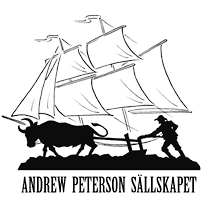Building projects: Excerpt from Andrew’s diary, the 26th of October, 1855: ”Stopped felling trees for my byre”. Maple Syrup: Excerpt from Andrew’s diary, the 25th of April, 1862: ”Today I’ve boiled a bit over a gallon of Syrup”.
Forest logging and sale of timber: From Andrew’s diary: ”Got the bill from the lumber company”.
Removal of tree-stumps and bushes before planting new crops was time-consuming, very hard work that both Andrew and the fictional character Karl Oskar had to spend a big portion of their lives doing. They both refer to it as: “Grubbade på filen”. “Grubba-de” is swenglish for taking away stumps, roots and rocks. “Filen” is swenglish for ‘the fields’. They also talked about “brussade” which is swenglish for taking away bush.
Elsa and the fictional character Kristina didn’t only do similar chores indoors – like using the “cook-stove” (“kokståfen” in swenglish) and knitting quilts and bed covers – they also, both of them, did similar work outdoors. They both worked during hay-harvest and harvest of other crops, they worked with reaping, gardening and animal care.
Hunting, fishing: Andrew’s diary on the11th of March, 1856: ”tonight we’ve been fishing and the boat was full of fish”. Andrew’s diary from the 1st of May and the 20th of May, 1857: “Fished in the ‘Kräken’ dragged nets – got a really nice catch”. Moberg writes in the novels; ”It was child’s play to catch fish in ’Ki chi saga’ ”.
Andrew had a variety of fruit trees, he had an apple orchard and was interested in the Astrachan varieties. He wrote the following report about the White Astrachan apple to the Minnesota State Horticultural Society in 1886: ”The Russian White Astrachan is nearly a Duchess but not Quite; in tree and fruit seems to be hardier than the Duchess, and is a good bearer”. Kristina, in the novels, has an astrachan apple tree as Family Tree and right before she dies she gets to taste the first ripe astrachan apple from that tree.
Both Andrew Peterson and Karl Oskar injured their backs during oak-felling.
Their respective chores and duties on the real and fictional farm are pretty consistent with each other. They grow the same crops, they have the same harvest counts (in bushels). The work they do with everything they have planted on their lands is the same. They say “hoa korn” which is swenglish for ‘hoeing corn’ and “hilla potatär” which means earthing up potatoes. The animal husbandry is the same and the slaughter routines are the same. Andrew says he “killade bugsen” when he means that he killed bugs.
In the novels, the settlers cooperate when they build houses, chapels, barns and byres just like they did in Andrew’s Minnesota. They borrowed draught animals from each other, helped each other with transports and did a lot of work-swapping – as well as borrowing different tools and farming equipment from each other. In the books, the tools, the machines – like mowers – and other equipment people borrow and lend to each other, are consistent with the type of equipment Andrew describes that he and Elsa lend out and borrow in real life.
You can read about other affinities, in more detail, in our pamphlet: ”Andrew Peterson, model for Karl Oskar – 100 similarities”.
Copyright Andrew Petersonsällskapet
